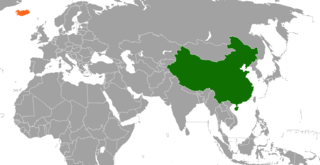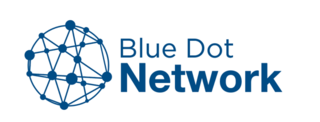Related Research Articles

The Export–Import Bank of the United States (EXIM) is the official export credit agency (ECA) of the United States federal government. Operating as a wholly owned federal government corporation, the bank "assists in financing and facilitating U.S. exports of goods and services", particularly when private sector lenders are unable or unwilling to provide financing. Its current chairman and president, Reta Jo Lewis, was confirmed by the Senate on February 9, 2022.

China Development Bank (CDB) is a policy bank of China under the State Council. Established in 1994, it has been described as the engine that powers the national government's economic development policies. It has raised funds for numerous large-scale infrastructure projects, including the Three Gorges Dam and the Shanghai Pudong International Airport.

The Development Bank of Southern Africa (DBSA) is a development finance institution wholly owned by the Government of South Africa. The bank intends to "accelerate sustainable socio-economic development in the Southern African Development Community (SADC) by driving financial and non-financial investments in the social and economic infrastructure sectors".

The energy policy of the European Union focuses on energy security, sustainability, and integrating the energy markets of member states. An increasingly important part of it is climate policy. A key energy policy adopted in 2009 is the 20/20/20 objectives, binding for all EU Member States. The target involved increasing the share of renewable energy in its final energy use to 20%, reduce greenhouse gases by 20% and increase energy efficiency by 20%. After this target was met, new targets for 2030 were set at a 55% reduction of greenhouse gas emissions by 2030 as part of the European Green Deal. After the Russian invasion of Ukraine, the EU's energy policy turned more towards energy security in their REPowerEU policy package, which boosts both renewable deployment and fossil fuel infrastructure for alternative suppliers.

A green-collar worker is a worker who is employed in an environmental sector of the economy. Environmental green-collar workers satisfy the demand for green development. Generally, they implement environmentally conscious design, policy, and technology to improve conservation and sustainability. Formal environmental regulations as well as informal social expectations are pushing many firms to seek professionals with expertise with environmental, energy efficiency, and clean renewable energy issues. They often seek to make their output more sustainable, and thus more favorable to public opinion, governmental regulation, and the Earth's ecology.
Energy in Kazakhstan describes energy and electricity production, consumption and import in Kazakhstan and the politics of Kazakhstan related to energy.
The Climate Investment Funds (CIF) were established in 2008 as a multilateral climate fund in order to finance pilot projects in developing countries at the request of the G8 and G20. The CIF administers a collection of programs with a view of helping nations fight the impacts of climate change and accelerate their shift to a low-carbon economy.
The Export–Import Bank of China is a policy bank of China under the State Council. Established in 1994, the bank was chartered to implement the state policies in industry, foreign trade, economy, and foreign aid to other developing countries, and provide policy financial support so as to promote the export of Chinese products and services.

China–Iceland relations formally began on 8 December 1971, when Iceland recognised Beijing. Prior to the signing of a Free Trade Agreement between the two countries in 2013, diplomatic activities between them were relatively few in number. However, since this event, political cooperation has increased. There is growing number of economic and cultural ties, as their political partnership has expanded.
A Green bond is a fixed-income financial instruments (bond) which is used to fund projects that have positive environmental and/or climate benefits. They follow the Green Bond Principles stated by the International Capital Market Association (ICMA), and the proceeds from the issuance of which are to be used for the pre-specified types of projects.

The Belt and Road Initiative, known in China as the One Belt One Road and sometimes referred to as the New Silk Road, is a global infrastructure development strategy adopted by the Chinese government in 2013 to invest in more than 150 countries and international organizations. The BRI is composed of six urban development land corridors linked by road, rail, energy, and digital infrastructure and the Maritime Silk Road linked by the development of ports.

The Silk Road Fund is a China Government Guidance Fund to foster increased investment in countries along the Belt and Road Initiative, an economic development initiative primarily covering Eurasia. The Chinese government pledged US$40 billion for the creation of the investment fund, established on 29 December 2014.
The Belt and Road Forum for International Cooperation is an international political and economic forum of the Belt and Road Initiative.

Benban Solar Park is a photovoltaic power station with a total capacity of 1650 MW nominal power which corresponds to an annual production of approximately 3.8 TWh. It is located in Benban in the western desert, approximately 650 km south of Cairo and 40 km northwest of Aswan. Benban is currently the 4th largest solar power plant in the world.
Policy bank (政策性银行), or policy lender, refers to non-profit professional financial institutions established by the Chinese government with the goal of implementing the government's economic policies and carrying out financial business in specific fields. This measure separates policy finance from commercial finance and establishes a policy bank to undertake strictly defined policy businesses. Policy banks' sources of funds mainly rely on issuing financial bonds or borrowing from the central bank, and generally do not accept deposits from the public.
Emba Hunutlu power station is a 1320 MW coal fired power station in Turkey in Adana Province. As of 2022 it is the largest Chinese foreign direct investment in the country. Despite opposition from many environmental organisations the plant was started up in 2022 and burns Russian coal as it is cheaper than other coal. The plant is less than 2 km from another coal-fired power station, İsken Sugözü.
The China-LAC Cooperation Fund is a multilateral investment and financing cooperation fund established by the Chinese government. The CLAC Fund is divided into a US$2 billion co-financing facility and US$3 billion investment fund. Both the co-financing facility and fund support investments and projects in Latin America and the Caribbean.

The Blue Dot Network (BDN) is a multilateral organisation that promotes a certification framework for quality infrastructure projects. The initiative is a joint project of the governments of Australia, the Czech Republic, Japan, Spain, Switzerland, United Kingdom, and the United States that supports investment in high-quality infrastructure projects around the world, especially by the private sector.
Sustainable finance is the set of practices, standards, norms, regulations and products that pursue financial returns alongside environmental and/or social objectives. It is sometimes used interchangeably with Environmental, Social & Governance (ESG) investing. However, many distinguish between ESG integration for better risk-adjusted returns and a broader field of sustainable finance that also includes impact investing, social finance and ethical investing.
References
- ↑ "Special Policy Study on Green Belt and Road and 2030 Agenda for Sustainable Development" (PDF). International Institute for Sustainable Development. Archived from the original (PDF) on 2019-11-17. Retrieved 2019-11-26.
- ↑ "Guidance on Promoting Green Belt and Road". Ministry of Ecology and Environment.
- ↑ "DRC and China EximBank release report on green finance for Belt and Road". Development Research Center of the State Council.
- 1 2 "Greener Power Projects for the Belt & Road Initiative (BRI)". Natural Resources Defense Council. 22 April 2019.
- ↑ "Bolstering the Belt and Road Initiative through green finance". China Daily. April 26, 2019.
- ↑ Geis, Ruediger (March 19, 2019). "Can the Belt and Road Initiative Be Green?". Brink.
- ↑ Yu, Enoch (May 7, 2017). "London calling: green finance, belt and road the latest China business push". South China Morning Post.
- ↑ "The Role of Investors in Promoting Sustainable Infrastructure Under the Belt and Road Initiative" (PDF). Chatham House.
- ↑ "White Paper on Green Finance" (PDF). The Export-Import Bank of China.
- ↑ "Leveraging China's "Green Soft Power" For Responsible Belt and Road Initiative Investment". Forbes. May 14, 2019.
- ↑ Xiong, Minpeng; Yang, Xiaowen; Chen, Sisi; Shi, Fulian; Yuan, Jiahui (October 4, 2019). "Environmental Stress Testing for China's Overseas Coal Power Investment Project". Sustainability. 11 (19): 5506. doi: 10.3390/su11195506 .
- ↑ "China's top two banks won't finance controversial Adani coal mine in Australia". Reuters. December 4, 2017.
- ↑ "China Avoids Coal Projects in Belt and Road for First Time". au.finance.yahoo.com. Archived from the original on 2021-08-13. Retrieved 2021-08-13.
